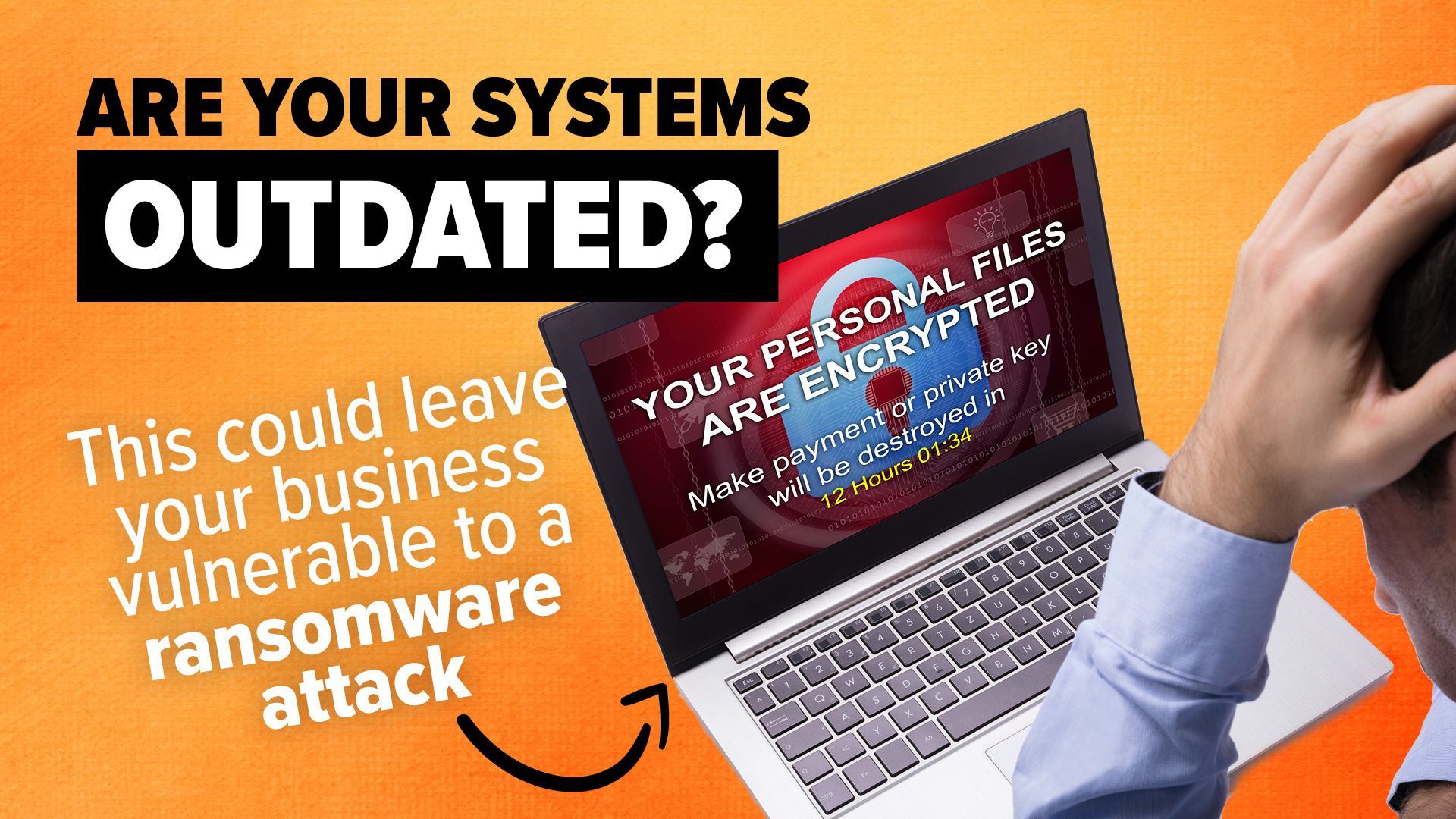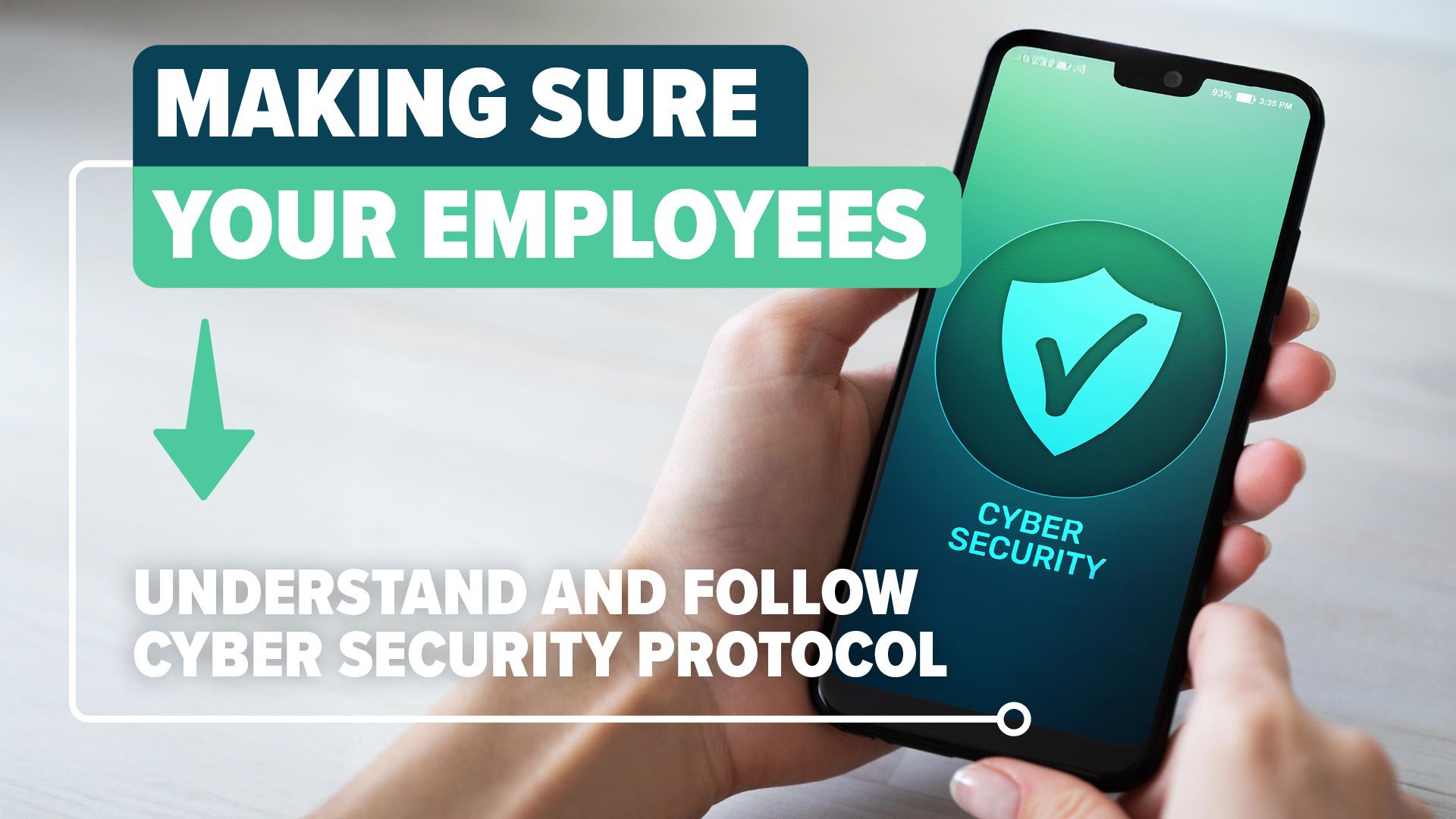The 3 most important areas to discuss with your technology partner

Weak passwords remain one of the most common—and preventable—cybersecurity threats facing businesses today. Cybercriminals are becoming increasingly sophisticated, and even one compromised password can lead to serious consequences. Once inside, attackers can access sensitive data, financial records, or even take control of your systems. Many hackers use automated tools to launch what's known as brute-force attacks, rapidly testing millions of password combinations in seconds. If your password is something like “Password123” or “CompanyName2025,” you're making it alarmingly easy for attackers to break in. What Can Happen When a Password is Compromised? Data breaches Financial loss Identity theft Reputation damage Creating Strong Passwords Without the Headache A strong password acts like a secret formula—known only to you—and should be complex enough to withstand cracking tools. Here’s what a secure password should include: At least 14 characters (longer is better) A mix of uppercase and lowercase letters Numbers and symbols (like @, %, or &) No common words or easily guessed details (names, birthdays, the word “password”) Rather than relying on a single word, consider using a passphrase—a short, memorable sentence that’s difficult to guess but easy to recall. For example, instead of “Sailing2025,” a more secure choice would be “Coffee&CloudsAreGreat9!” Common Password Mistakes to Avoid Using personal information (names, birthdays, company names) Reusing the same password across multiple accounts Relying on simple sequences like “123456” or “abcdef” Writing passwords down where others can find them (e.g., sticky notes) Simplify with a Password Manager If the idea of remembering a unique password for every account feels overwhelming, consider using a password manager. These tools: Generate strong, unique passwords Store them securely in encrypted vaults Autofill login credentials when needed You only need to remember one strong master password—the manager handles the rest. Don’t Forget Multi-Factor Authentication (MFA) Even the strongest password isn’t enough on its own. That’s why multi-factor authentication (MFA) is essential. MFA adds a second layer of protection—typically a one-time code sent to your phone or generated by an authentication app—to verify your identity. Build a Strong Password Policy for Your Team If your employees have access to business systems, having a formal password policy in place is a smart move. It should cover: Unique passwords for each account or system Regular employee training on password best practices Mandatory MFA for sensitive accounts Routine scans for compromised credentials Final Thoughts Password security isn’t just a technical issue—it’s a critical part of your business’s overall risk management. By implementing strong practices and educating your team, you significantly reduce the chance of a cyberattack. Need help securing your systems or building a company-wide password policy? We’re here to help.

Ransomware is one of the most significant cyber threats facing businesses today. This type of attack occurs when cybercriminals infiltrate a system, encrypt critical files, and demand a ransom—often in cryptocurrency—in exchange for the decryption key. However, even if a business pays the ransom, there is no guarantee that the data will be restored. A robust backup system is one of the most effective defenses against ransomware, ensuring that businesses can recover their data without having to negotiate with cybercriminals. However, not all backup solutions provide the same level of protection, and many companies are unknowingly relying on outdated or vulnerable systems. Why Traditional Backups May Not Be Enough Cybercriminals are becoming increasingly sophisticated, and many older backup solutions were not designed to withstand modern ransomware threats. Businesses relying on legacy backup systems face three key risks: 1. Targeted Backup Attacks Attackers know that backups are a company’s last line of defense, making them a primary target . If a backup system lacks the necessary security measures, hackers can encrypt or delete backup files, leaving businesses with no recovery options. 2. Lack of Encryption Encryption is a crucial security measure that protects data by making it unreadable to unauthorized users. Without encryption, backup files are vulnerable to tampering , which can compromise data integrity. Alarmingly, nearly one-third of businesses report that their backup data remains unencrypted. 3. Backup Failures Outdated backup systems often fail at the worst possible moment —during data restoration. If a backup system is unreliable, businesses may face extended downtime, costly data recovery efforts, or even permanent data loss following an attack. Strengthening Your Backup Strategy Against Ransomware To effectively combat ransomware threats, businesses must adopt modern backup solutions that offer advanced security features. One of the most effective strategies is implementing immutable storage , which prevents backup data from being altered or deleted—regardless of whether an attacker gains system access. Immutable backups are built on a Zero Trust security model, which assumes that no user or system should be trusted by default. Every access request is verified, and permissions are strictly controlled, ensuring that critical data remains secure even in the event of a breach. Ransomware Attacks Are Evolving—Is Your Backup System Keeping Up? As ransomware tactics become more advanced, businesses must ensure their backup strategies evolve accordingly. A strong, modern backup system is no longer optional—it is a critical component of cybersecurity. If you're unsure whether your current backup system is providing adequate protection, we can help. Contact us today to assess your backup strategy and implement the most effective solutions for your business.

Cybercriminals are constantly refining their tactics to bypass security measures, and a new phishing technique involving corrupted Microsoft Word files is now on the rise. Even the most advanced email security filters can struggle to detect these threats, making it easier for malicious attachments to reach unsuspecting users. How the Scam Works Phishing scams are designed to trick users into revealing sensitive information, such as login credentials or financial details. These attacks often arrive in the form of emails that appear to be from trusted sources , such as colleagues, suppliers, or financial institutions. A common phishing tactic involves sending an email with an attachment—often a Word document—that appears to be an invoice, a contract, or a legitimate business request. However, these corrupted files are intentionally structured in a way that prevents security filters from scanning them effectively. Once opened, Microsoft Word attempts to "repair" the document, displaying what looks like a normal file. Hidden within the document, however, is a malicious QR code or link that redirects users to a phishing site—frequently a fake Microsoft 365 login page. Entering login credentials on this site gives hackers access to business accounts, potentially exposing sensitive customer data, financial records, or internal communications. The Consequences of a Single Compromise Once cybercriminals gain access to just one employee’s account, the risks escalate rapidly: Data breaches – Sensitive company and customer data may be exposed or stolen. Business disruption – Attackers can lock employees out of essential files and cloud systems. Further phishing attacks – Hackers can send deceptive emails from a compromised account, targeting colleagues or business contacts. Financial and legal repercussions – Data theft or ransomware attacks can result in significant financial losses and regulatory penalties. The impact of a successful phishing attack can be devastating, not only in terms of immediate financial harm but also in long-term damage to a company’s reputation. How to Stay Protected Cyber threats are evolving, but businesses can mitigate risk by fostering a security-first culture . The most effective defense against phishing is awareness and caution . Here are key steps to protect your organization: Pause before opening attachments or clicking links – Verify the source before taking action. Be wary of urgent requests – Scammers often create a sense of urgency to prompt impulsive decisions. Confirm legitimacy – If an email seems suspicious, contact the sender directly to verify its authenticity. Never assume legitimacy based on appearance – Phishing emails often mimic professional branding and formatting. Educate employees on cybersecurity best practices – Regular training sessions help staff recognize and respond to phishing attempts effectively. Proactive measures, combined with employee awareness, are essential for safeguarding business data and operations. If you need expert guidance on phishing prevention and cybersecurity training, reach out to us today.

Cybersecurity is a critical component of protecting your business, but even the most advanced security measures can be compromised if employees unknowingly create vulnerabilities. While many organizations invest in strong passwords, firewalls, and software updates, human error remains one of the most significant threats to data security. The Risks of Employee Cybersecurity Practices With the rise of remote work, employees frequently use personal devices—phones, tablets, and laptops—for business purposes. Research indicates that four out of five employees rely on their personal devices for work-related tasks. However, these devices often lack the security protocols found on company-managed systems, leaving them exposed to cyber threats such as weak passwords, outdated software, and unsecured Wi-Fi networks. Further compounding the issue, two out of five employees admit to downloading customer data onto personal devices , creating additional risks of data exposure. Even more concerning, more than 65% of employees report that they only follow cybersecurity guidelines “sometimes” or “never.” This includes behaviors such as: Forwarding work emails to personal accounts Using personal devices as Wi-Fi hotspots for work Ignoring guidelines when handling sensitive data with AI tools Password management is another widespread issue. Nearly half of employees use the same passwords across multiple work accounts , and over a third use identical passwords for both personal and professional accounts. If a hacker gains access to an employee’s personal social media account, they may be able to infiltrate business systems using the same credentials. Strengthening Cybersecurity Through Employee Education To mitigate these risks, organizations must prioritize cybersecurity awareness and education. Most security breaches occur not because of intentional rule-breaking, but due to a lack of understanding. Employees must be made aware that small habits—such as reusing passwords or working over public Wi-Fi—can significantly compromise business security. Key strategies to enhance employee cybersecurity practices include: Implementing password managers to generate strong, unique passwords for each work account Requiring access to company systems only on approved, secure devices Prohibiting the forwarding of work emails to personal accounts Providing regular cybersecurity training to reinforce best practices and keep employees informed about emerging threats Encouraging employees to actively participate in cybersecurity efforts can turn them into the organization’s first line of defense rather than its weakest link. Recognizing and rewarding employees who adhere to security protocols—such as identifying phishing attempts or safeguarding sensitive information—can help foster a security-conscious workplace culture. Cybersecurity is a shared responsibility. By equipping employees with the right knowledge and tools, businesses can significantly reduce the risk of data breaches and protect their sensitive information from cyber threats. For expert guidance on employee cybersecurity training and risk management, contact us today.

In today's fast-paced business environment, efficiency and productivity are paramount. Imagine having an assistant that never gets tired, never misses a detail, and can help with everything from drafting emails to organizing meetings. This is the promise of Microsoft Copilot, a smart, AI-driven tool integrated into the Microsoft apps you already use. What Is Microsoft Copilot? Microsoft Copilot is an AI-powered assistant embedded within the Microsoft Office suite, including Word, Excel, Teams, and more. It's designed to handle time-consuming tasks that often slow down teams, allowing you to focus on more important aspects of your work. The best part is that you don't need to be tech-savvy to use it—if you're familiar with Microsoft Office applications, you can seamlessly incorporate Copilot into your workflow. How Does Copilot Work? Copilot operates within the Microsoft 365 ecosystem to provide real-time assistance as you work. Here's how it enhances your productivity: In Word: Assists in drafting reports, creating outlines, and suggesting edits to improve your writing. In Excel: Helps analyze data, generate charts, and even create complex formulas. In Teams: Summarizes meeting discussions, highlights key decisions, and notes action items. In Outlook: Summarizes lengthy email threads and suggests responses to streamline communication. Benefits of Using Copilot Seamless Integration One of the standout features of Copilot is its seamless integration into software you're already using. There's no need for complicated installations or extensive training sessions. Because it's built into Microsoft 365, your team can start using it immediately with minimal disruption. It works across devices, so whether you're in the office or on the go, Copilot is readily accessible. Simplifying Daily Tasks Routine tasks like sorting through emails or organizing meetings can consume a significant portion of your day. Copilot automates these tasks by summarizing long email chains, suggesting responses, and helping organize your schedule. This allows you to focus on tasks that truly require your attention and expertise. Enhancing Collaboration During collaborative efforts, especially meetings, keeping track of everything can be challenging. Copilot addresses this by summarizing entire meetings in Teams, capturing key points, decisions, and tasks. It ensures that everyone stays on the same page and helps in planning the next steps without missing any critical details. Boosting Creativity Starting a new document or presentation can sometimes be daunting. Copilot assists by generating first drafts or outlines based on your prompts. This feature helps overcome writer's block, allowing you to quickly move forward with your projects and add your personal touch during the refinement process. Making a Difference in Your Business By integrating Copilot into your daily operations, you can create a more productive, efficient, and creative workplace. It not only handles administrative tasks but also empowers you and your team to unlock your full potential. With Copilot handling the groundwork, you can dedicate more time to strategic thinking and innovation. Conclusion Microsoft Copilot represents a significant advancement in how we interact with technology in the workplace. Its ability to seamlessly integrate with familiar tools and simplify complex tasks makes it a valuable asset for any business looking to enhance productivity and collaboration. By leveraging Copilot, you can focus on what truly matters—driving your business forward.

Cyber extortion is a topic that's been making headlines and causing sleepless nights for many. Is it something that's on your radar? It should be, because it could affect your business one day. So, what is cyber extortion? It's a type of cybercrime where criminals threaten to harm your business by compromising its data and digital assets unless a ransom is paid. These threats often involve ransomware, a malicious software that encrypts your data, making it inaccessible until you pay the ransom. Sometimes, cyber criminals go a step further by stealing data and threatening to release it publicly on dark web leak sites if their demands aren't met, a dual threat known as double extortion. According to a 2024 report, the number of victims of cyber extortion scams has skyrocketed by 77% over the past year. What’s more, small businesses are four times more likely to be targeted compared to larger counterparts. This is a worrying trend, especially since smaller businesses often have fewer resources to defend against these attacks. In the first quarter of this year alone, 1,046 businesses fell victim to double extortion. While that number may not seem huge, the actual figure is likely much higher since many cases go unreported, hiding in the shadows of what experts call the “dark number.” The truth is, all businesses, regardless of size or industry, are potential targets. However, certain sectors are more frequently attacked. Manufacturing, professional, scientific, and technical services, as well as wholesale trade, top the list. Alarmingly, the healthcare and social assistance sectors are also seeing a significant rise in attacks, despite the potential societal and political repercussions. Cyber criminals are opportunistic and strategic, targeting regions with strong economic growth and shared languages. For instance, cyber extortion attacks in the US have increased by 108%. While the rise in cyber extortion is concerning, there are steps you can take to protect your business. Here are some key strategies: Back up your data: Ensure you have a robust backup plan, keeping your critical data in an offline or offsite location, and regularly test your backup restoration process. Keep software updated: Make sure all your devices use the latest software, especially those connected to the internet. Implement Multi-Factor Authentication (MFA): Strengthen your access controls with MFA, adding an extra layer of security by requiring multiple forms of verification before access is granted. Also, limit user access to only the systems they need for their job. Patch and vulnerability management: Regularly update your systems to fix any security vulnerabilities. Cyber criminals often exploit known weaknesses, so staying on top of patches can prevent many attacks. By understanding what cyber extortion is and how it works, you can better prepare your business to defend against it. The key is to be proactive. If we can help prepare your business and keep it safe, get in touch.

Imagine waking up one morning, turning on your computer, and finding that all your important files—customer data, financial records, and more—are completely inaccessible. Then, a menacing message appears, demanding a ransom to unlock your data. This is ransomware, a type of malicious software that seizes your data and holds it hostage. It often begins with an innocent-looking email or link, luring you into a trap. This deceptive tactic is known as a phishing email, where the sender seems legitimate but is actually a cybercriminal. Once you click on the link or open the attachment, malicious software is silently installed on your system, and the attackers swiftly begin their work. They encrypt your files, rendering them inaccessible, and then demand a ransom in exchange for a decryption key. Paying the ransom is highly risky because there's no guarantee you'll regain access to your data, and it only encourages further attacks. The year 2023 saw a significant surge in ransomware attacks, following a two-year decline. Reports indicate a dramatic increase in ransomware incidents, breaking a six-year record. One major factor behind this spike is the emergence of Ransomware-as-a-Service (RaaS), a model that allows cybercriminals to "rent" ransomware tools, making it easier than ever to launch attacks. Consequently, more businesses are finding themselves listed on data leak sites, with a 75% increase in victims between 2022 and 2023. To make matters worse, attackers are becoming more sophisticated. They develop new variants of existing ransomware, share resources, and exploit legitimate tools for malicious purposes. They also act quickly, often deploying ransomware within 48 hours of gaining access to a network, and tend to strike outside of work hours to avoid detection. A ransomware attack can have devastating consequences for your business. The financial losses can be substantial, not just from the ransom itself but also from downtime and recovery costs. You risk losing critical data if decryption is not possible, and your reputation could suffer if customers learn their information was compromised. Additionally, your business operations could be severely disrupted, impacting your ability to serve clients. So, how can you protect your business from this growing threat? Educate Your Team: Ensure everyone knows how to recognize phishing emails and avoid suspicious links and attachments. Regular Backups: Frequently back up your critical data and store those backups securely offline. Keep Systems Updated: Maintain up-to-date software and systems with the latest security patches, and invest in robust security tools. Limit Data Access: Only grant employees access to the information necessary for their jobs. Monitor Network Activity: Keep an eye on your network for unusual activity and have a rapid response plan for incidents. If your business does fall victim to a ransomware attack, stay calm and seek assistance from cybersecurity experts like us to resolve the issue. Remember, it’s best not to pay the ransom, as it only fuels further criminal activity. Our team specializes in helping businesses take proactive measures to safeguard their data. If you need assistance, please get in touch with West Coast IT.

Have you heard about Team Copilot yet? It’s the latest addition to Microsoft’s suite of AI tools and should be available later this year. Think of Team Copilot as an advanced, AI-powered assistant designed to help your team work better together. While Microsoft’s 365 Copilot has been a personal assistant for individual tasks like drafting emails or recapping missed meetings, Team Copilot takes it to the next level by focusing on group activities. There are three main ways Team Copilot can help your team: 1. Meeting facilitator During a Teams video call, Team Copilot can take notes that everyone in the meeting can see and edit. It can also create follow-up tasks, track time for each agenda item, and assist with in-person or hybrid meetings when used with Teams Rooms. 2. Group text chat assistant In group text chats within Teams, Copilot can summarize lengthy conversations to highlight the most important information. It can also answer questions from the group, making it easier to stay on track and informed without wading through pages (and pages and pages) of chat history. 3. Project manager Team Copilot can help manage projects by creating tasks and goals within Microsoft’s Planner app. It can assign these tasks to team members and even complete some tasks itself, like drafting a blog post. It will notify team members when their input is needed. You know that productivity isn’t just about individual work. It’s also about effective teamwork. So, by helping with group-oriented tasks, Team Copilot can make big improvements to your overall productivity. It’s important to note that while Team Copilot is incredibly helpful, it doesn’t replace the role of a human meeting facilitator. It won’t lead meetings or ensure inclusivity, but it will create agendas, track time, take notes, and share files. It’s more of a business insights assistant, helping with group interactions and meetings rather than censoring comments or keeping people in line. But hey, who knows what’s to come in future! Team Copilot will be available in preview later this year for Microsoft 365 customers with a Copilot subscription. While it’s a work in progress, the potential it has to transform team productivity is huge. Keep an eye out for its release and think about how it could fit into your workflow to boost your team’s productivity. If you have any questions or need further assistance in understanding how Copilot can benefit your business, get in touch.

We all know how important it is to keep our people up-to-date on the latest cyber threats. After all, with cyber attacks on the rise, staying one step ahead is crucial to protect your business from potential breaches. But here’s the thing – annual cyber security training just isn’t cutting it anymore. Sure, it’s become a routine part of the calendar for many organizations. And it’s great that it’s happening at all. But ask any security leader, and they’ll tell you… employees find it time-consuming and uninspiring. From clicking through slides to skimming through videos at double-speed, it’s usually seen as just another box to check. And let’s be honest, even for those who do engage with the training, there’s little evidence it leads to real behavior change. That’s because the traditional approach lacks interactivity and doesn’t connect with employees on a personal level. It’s more about checking boxes than building a culture of cyber security vigilance. Guess what? There’s a better way. It’s all about small, regular, human-centric interventions. Think of it like the speed signs you see when you’re driving. They remind people to stop and think before they engage in risky behavior. Just as the signs work for driving, this kind of training makes your employees more aware of what they’re clicking. By nudging employees toward safer decisions in real-time, we can help them develop better cyber hygiene habits without overwhelming them with information overload. It’s about empowering them to make smarter choices every day. And with the amount of Generative AI and third-party tools we’re surrounded with right now, it’s more important than ever to give employees the guidance they need to navigate potential risks. Whether it’s through real-time coaching or policy reminders, we can help employees understand the importance of safeguarding sensitive data. So, while there may be a place for annual training, it’s time to think about using a more proactive approach to cyber security education. This is something we can help you with. If you want to learn more, get in touch.

Imagine you're driving down a winding road in the middle of nowhere. Suddenly, your car breaks down. You're stuck, miles from assistance. You feel helpless. Frantically searching for a solution. This scenario isn't too different from the world of IT support when you rely on what’s known as a break/fix relationship with your provider (when your IT is broken, they fix it. And that’s it; there’s no proactive work). But what if there was a way to ensure a smoother journey? That's where the magic of having a contract with your IT support provider comes in. Think of it as having a trusted mechanic who not only fixes your car but actually prevents breakdowns in the first place. Whether you run a bustling corporation or a small startup, entering into a contract with your IT support provider is the smart, cost-effective way to ensure a smoother tech journey.

